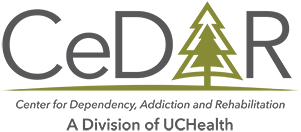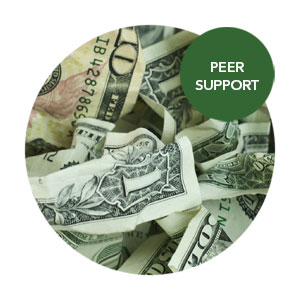PEER SUPPORT
The reality of our finances can be overwhelming – either upon entering a treatment program or right as we leave it. Many people in recovery have some form of financial difficulty caused by addictive consequences including legal issues, losing jobs and, for some, just never having learned how to manage finances in the first place.
Start on the path of identifying financial problem areas. Learn about finances in recovery, and use some basic tools to ensure your financial recovery is integrated into your larger recovery plan.
For most of us in our active addiction, there have been financial consequences. These may have come from:
- Direct spending on drugs and alcohol
- Fines and legal fees related to breaking the law
- Loss of job resulting in financial distress
- Cost of treatment, urine monitoring, or continuing care counseling
- Cost of medical issues that arose as a result of the addiction
There are many myths around money and personal finance; some may be widely-accepted, others may be ones that we told ourselves while in active addiction.
Let’s take a look at some of these myths and help to correct them before you start down the path towards financial recovery.
Myth 1: I can afford everything I want right now, so I’m financially stable.
Having financial stability extends beyond your financial means in the present. It also means you are actively preparing for future needs and emergencies by building your savings.
Myth 2: Saving and budgeting money is going to greatly disrupt my life.
Saving and budgeting can be accomplished with small changes to your lifestyle, and can actually help remove some of the disruptions that financial issues can create in your life. In fact, it even provides a rewarding sense of accomplishment.
Financial recovery will likely require dedication and some immediate compromises, but the long-term benefits will make the changes well worth it. Two major initial steps are (i) becoming more aware of your spending habits; and (ii) prioritizing your needs.
Myth 3: I’m fine since I can make my credit card’s minimum payment each month.
The amount that you don’t pay off will grow each month. Take this simple example:
You buy $100 in groceries each month and pay for it with your credit card. Your credit card company charges a monthly interest of 20%. You pay the credit card’s minimum of $5, leaving you with $95 still owed. That $95 will grow 20%, and next month, you will owe roughly $114 to the credit card company.
Financial stability often means living with as little debt as possible.
Myth 4: My money is too hard to track.
Thanks to the power of technology, there are now many tools (many of which are free) to help you jumpstart your financial future. Websites such as Mint (which also has a free app) allow you to manage your finances.
Summary
Don’t buy into the myths mentioned above. Stay the course, make smart decisions, and you’ll set up a brighter future than you ever thought was possible!




